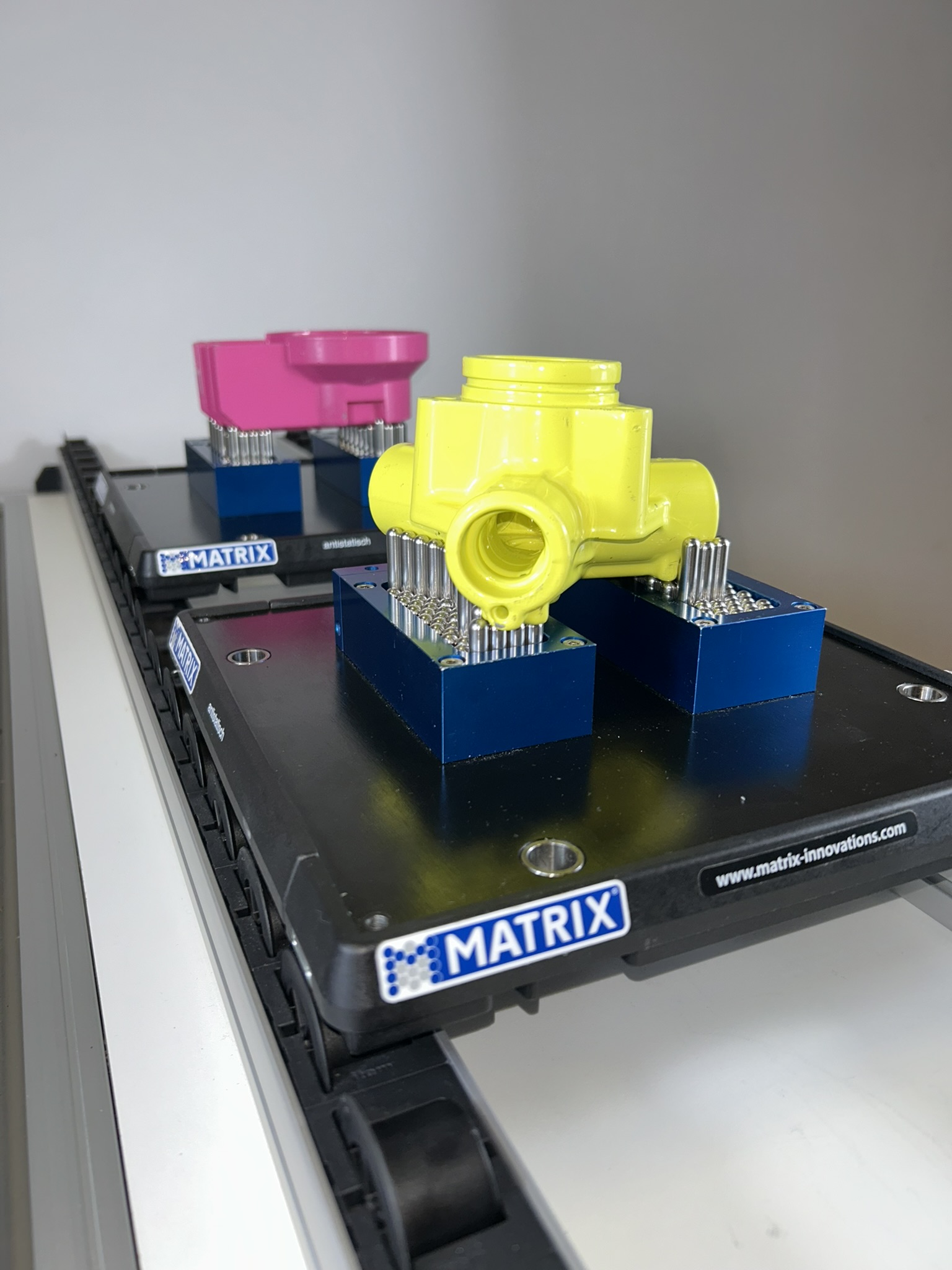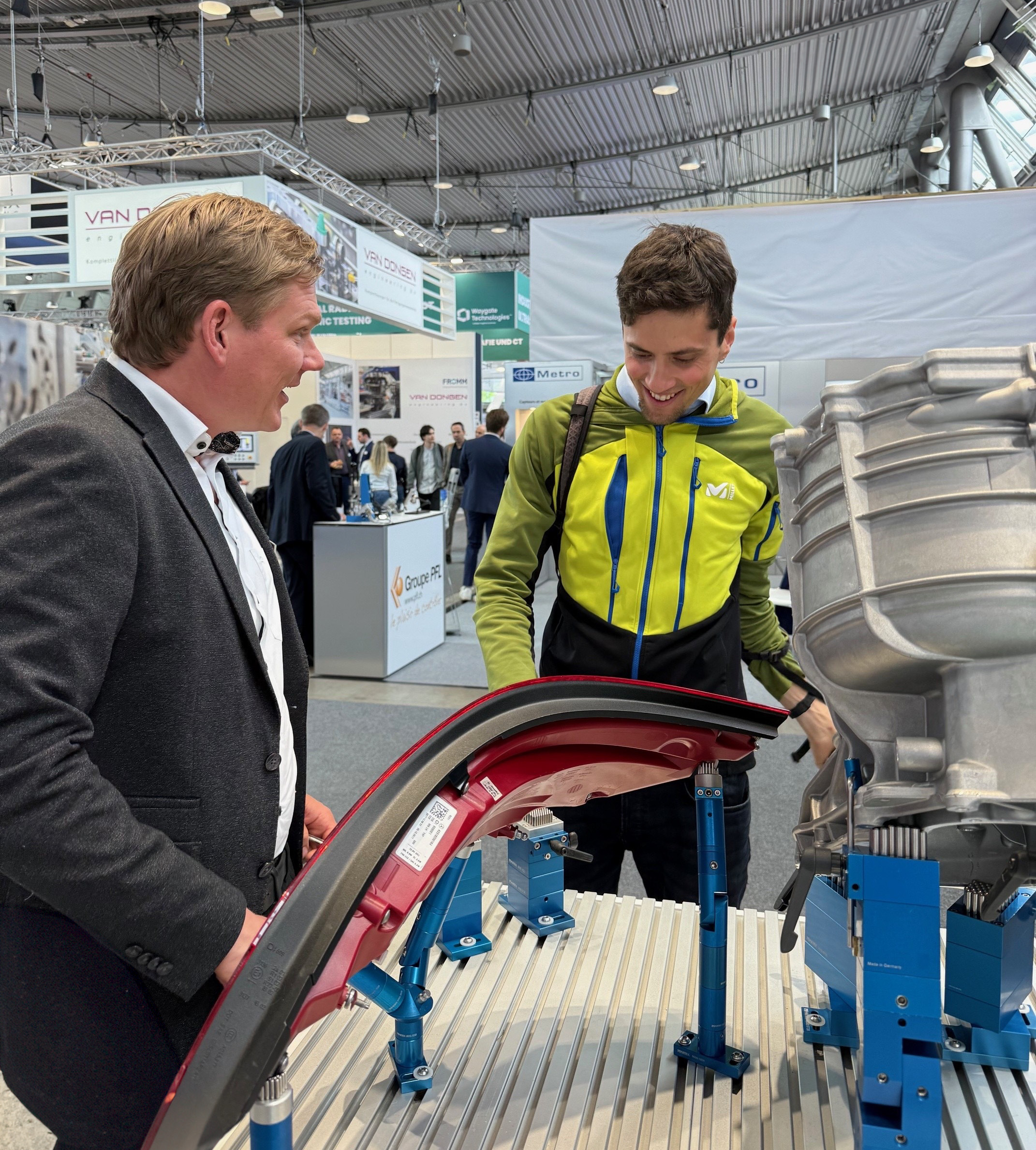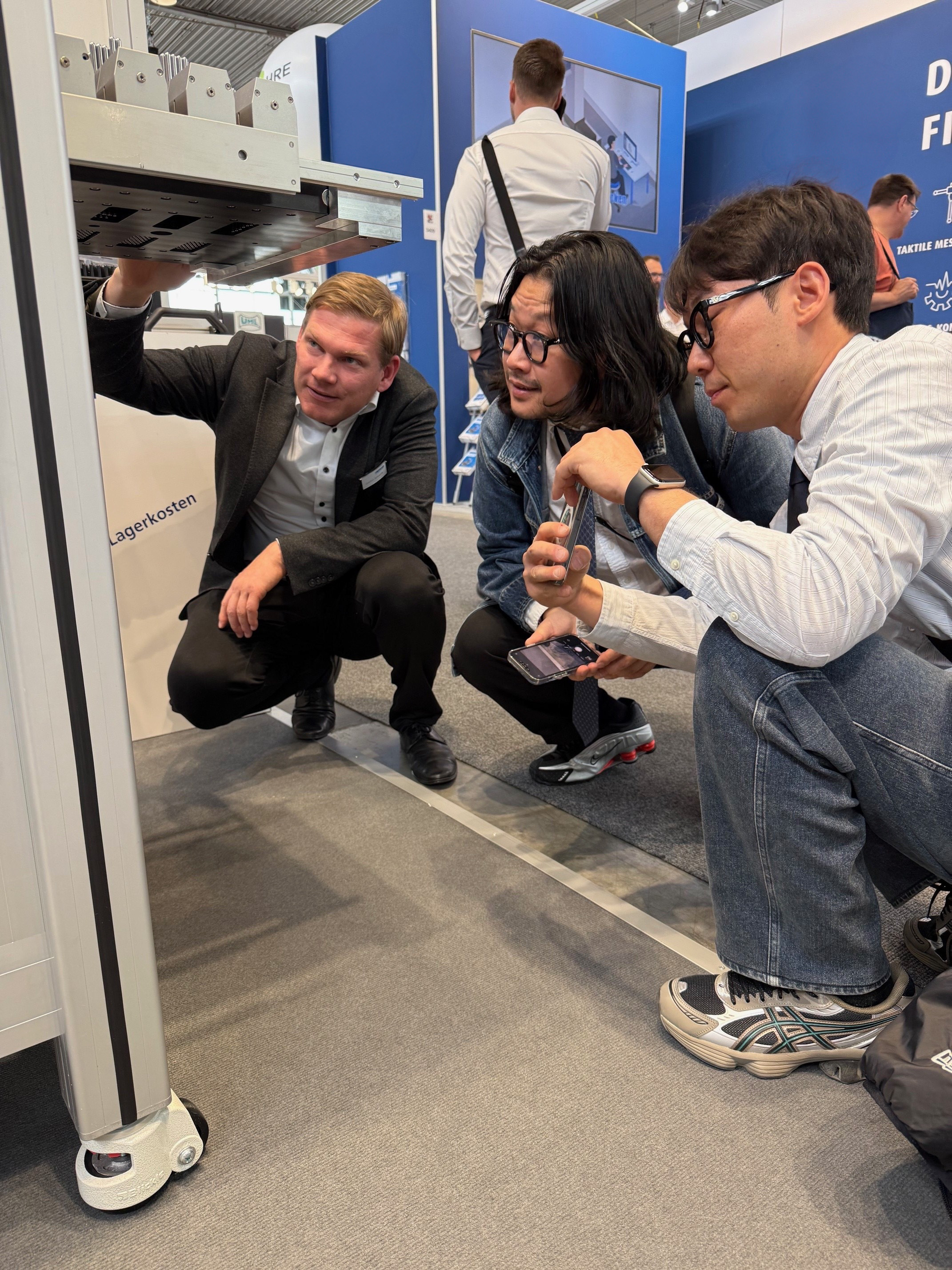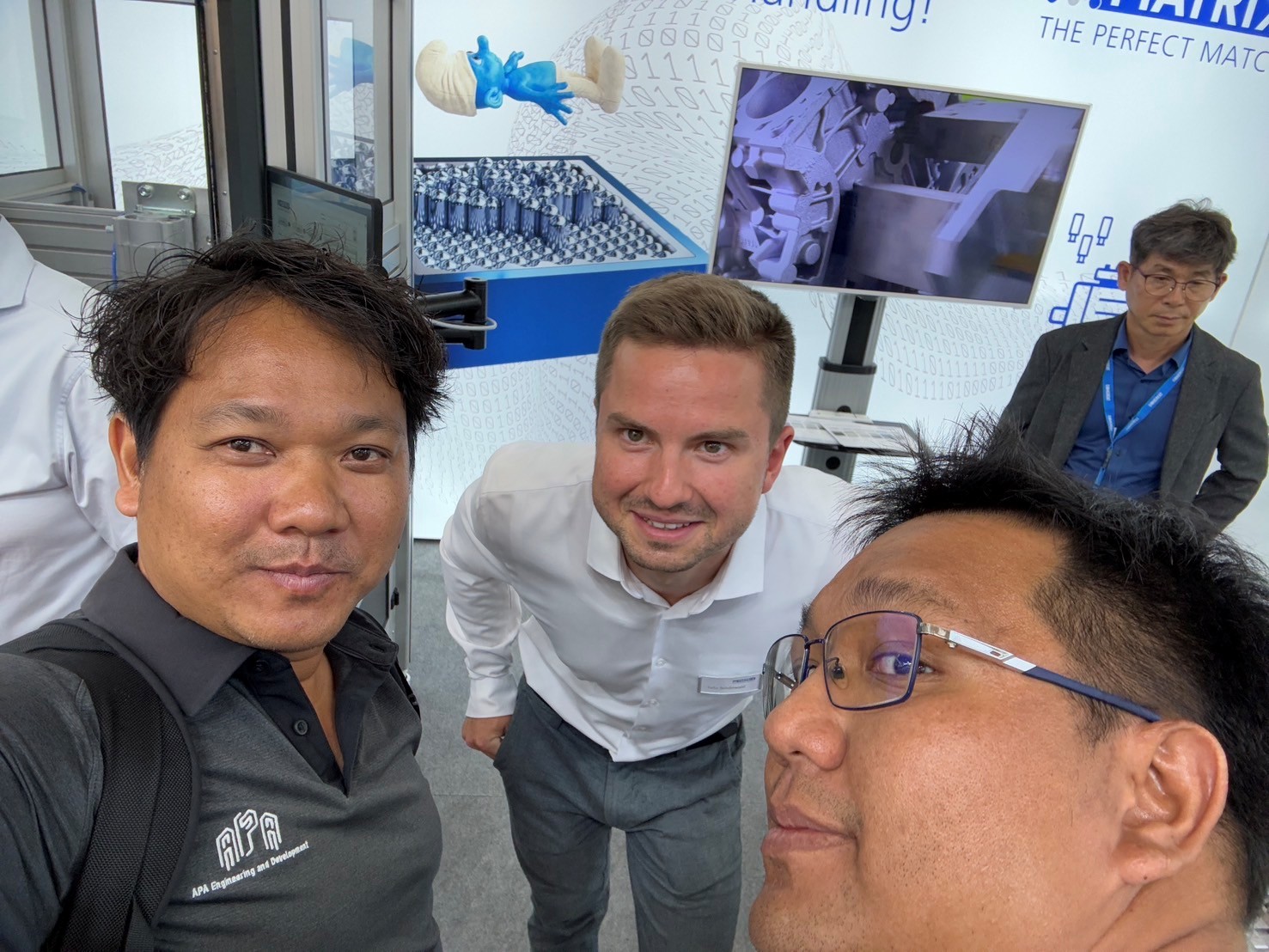
Flexible Workpiece Carriers in Conveyor Systems – One Solution for All Parts
Challenge: Increasing Part Variety in Modern Conveyor Technology
In modern production environments, the demands on flexibility in manufacturing lines are constantly increasing.
Highly complex workpieces must be transported, processed, or inspected on the same conveyor system - often in smaller batch sizes and with more frequent product changes.
Conveyor technology faces a key challenge: workpieces with different geometries are difficult to combine on conventional workpiece carriers.
Traditional conveyor systems with pallet circulation, roller, or chain drives were originally designed for uniform geometries.
In today’s production reality, this means:
When the workpiece changes, the carrier usually must be changed as well.
However, changing workpiece carriers leads to production interruptions.
In addition, significant effort is required for the design, manufacturing, and logistics of these carriers, since a dedicated workpiece carrier is needed for each variant.
Especially in lines with multiple product families or variants, this becomes a major cost factor - both in terms of time and space.
Each carrier must be designed, manufactured, managed, and stored.
The Next Step in Development: From Fixed to Flexible Workpiece Carriers
Modern modular conveyor systems have partially mitigated these issues.
Standardized pallets, exchangeable fixtures, and quick-change systems improve efficiency but remain part-specific.
Every new workpiece geometry still requires an individual adjustment or a new carrier design.
The logical next step is therefore a universal workpiece carrier - one that can adapt to the shape of any workpiece without the need for replacement or manual setup.
Solution: The Flexible Workpiece Carrier – MATRIX X-PAD
The MATRIX X-PAD workpiece carrier was developed precisely for this purpose.
The system adapts to any workpiece contour using a large number of adjustable pins that create a stable, form-fitting support surface matching the exact geometry of the part.
This allows a single production line to handle a wide variety of parts using the same workpiece carrier.
Instead of designing a new carrier for every component, the shape is defined digitally once - and then automatically transferred to multiple carriers.
Setup with the FLEXSTATION: From 3D Model to Master Carrier
The setup of X-PAD workpiece carriers is performed automatically via the MATRIX FLEXSTATION.
Within this station, a so-called master module receives the negative form of the workpiece to be transported - completely automated.
The basis for this process is the 3D model of the workpiece, provided in .STP, .STEP, or .STL format.
The FLEXSTATION reads the geometry from the CAD file, calculates the ideal carrier surface, and positions the pins of the master accordingly.
The result is a precise digital imprint of the workpiece - the negative form, which can later be copied to other carriers.
The FLEXSTATION programs the master carrier based on the CAD data of the workpiece. Its shape then serves as a template for additional X-PADs.
Copying Process: From Master to Workpiece Carrier
Once the workpiece shape is stored in the master module of the FLEXSTATION, it can be transferred to multiple X-PAD carriers within seconds.
The process takes place directly within the production line, as the FLEXSTATION is a fully integrated part of the system:
- Load target carriers: The X-PAD carriers to be programmed are automatically moved into the FLEXSTATION and set to their neutral base position.
- Transfer: The FLEXSTATION transfers the stored negative form of the master to the X-PADs, precisely copying the workpiece contour onto the carriers.
- Locking: The pins of the X-PADs are locked in place, making the carriers immediately ready for operation.
This creates an exact copy of the carrier surface within a few seconds.
The copying process is precise, repeatable, and can be performed as often as needed - without manual intervention or reprogramming.
In the integrated station, the workpiece form is automatically transferred from the programmed master to the X-PAD workpiece carriers. The process is precise, reproducible, and completed within seconds.
Flexibility During Production
When a new product batch is scheduled or the workpiece geometry changes, the X-PAD master can simply be switched to the new workpiece via software control.
The FLEXSTATION automatically reads the updated CAD data, generates a new negative form, and prepares the master configuration.
This allows production lines equipped with X-PAD carriers to switch to new products without downtime.
The carriers remain in circulation - only their surface configuration is digitally updated.
During a product change, the X-PAD master is digitally reconfigured to the new workpiece geometry.
This adjustment occurs entirely via software - without halting the conveyor line or requiring mechanical modifications.
Integration into Existing Conveyor Systems
One of the major advantages of the X-PAD system is its compatibility with existing conveyor and material-handling systems.
The carriers can be used in all common pallet, roller, or belt conveyor systems and can be seamlessly integrated with automated guided vehicles (AGVs) or robotic handling systems.
This makes the X-PAD suitable both for retrofitting existing production lines and for implementing new automation concepts.
Conversion effort is minimal, as the basic dimensions and interfaces of the carriers remain standardized - only the support surface adapts flexibly.
Economic and Process Benefits
The use of flexible workpiece carriers reduces not only technical complexity but also operational costs:
- No part-specific carriers: One X-PAD replaces dozens of conventional workpiece carriers.
- Minimized changeover times: Switching between parts is handled digitally - no mechanical adjustments required.
- Reduced storage needs: Fewer physical carriers, no storage of variants.
- Shorter ramp-up times: New products can be ready on the line within minutes - from CAD model to production.
- Reusability: Existing X-PADs can be reprogrammed for new parts at any time.
Additionally, the precisely contoured support surface ensures gentle workpiece handling, which is particularly valuable for sensitive or painted components.
Conclusion: One Workpiece Carrier for All Parts
With the X-PAD system, MATRIX has developed a solution that brings conveyor technology to a new level of flexibility.
Workpiece carriers that automatically adapt to any geometry eliminate changeover times and make the transport process independent of product variation.
The combination of the FLEXSTATION and X-PAD workpiece carriers enables production lines that can dynamically react to changing products -
without downtime, carrier replacement, or additional design effort.
The result: less complexity, lower costs, and a significant step toward adaptive conveyor technology.

.svg)
.svg)


.png)
.png)
.svg)
.svg)

.svg)


.png)
